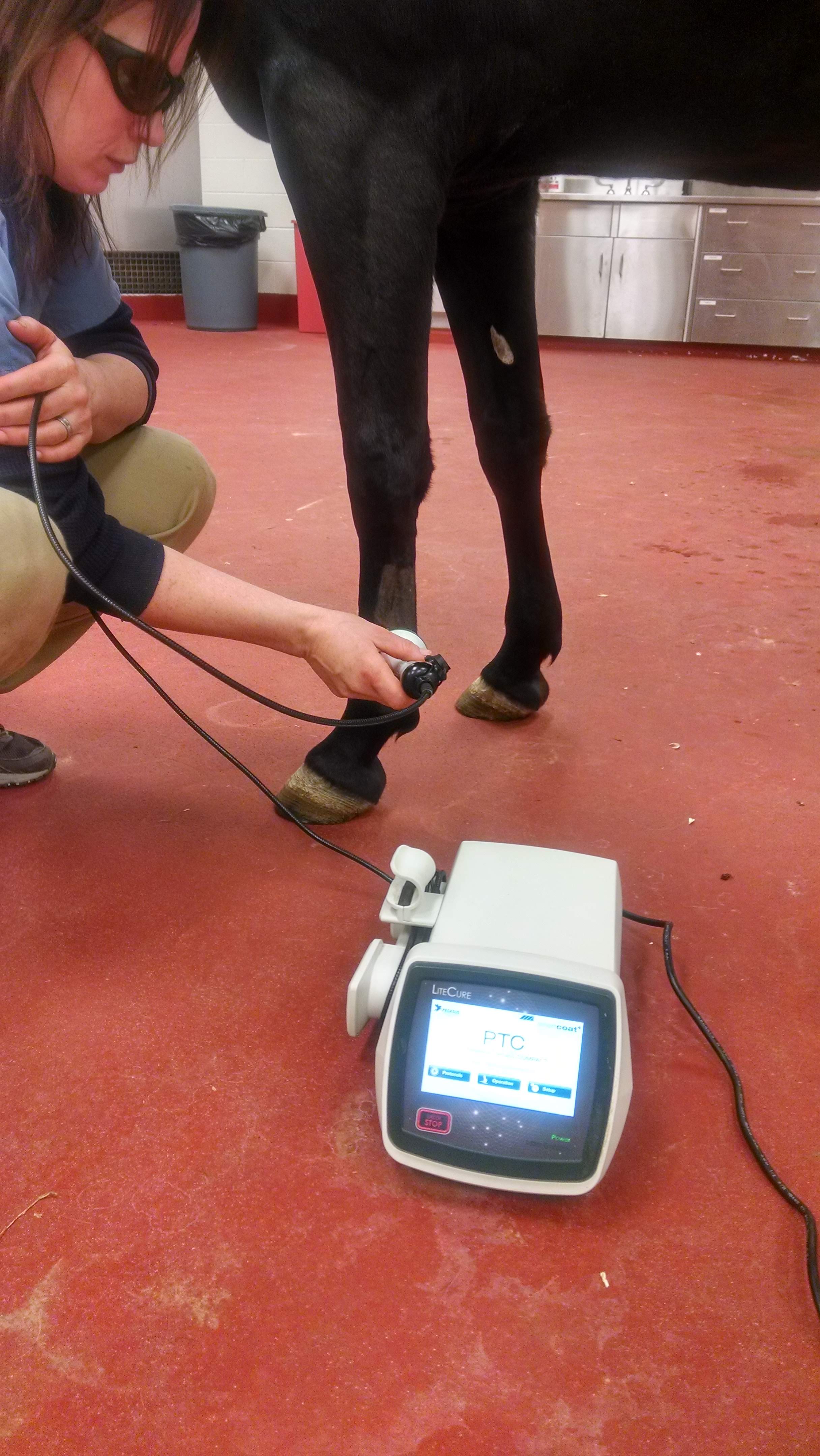Laser Treatment in Equine Therapy: A Modern Approach to Improving Equine Wellness
Laser treatment has actually arised as an essential technique in equine therapy, using focused light power to foster mobile repair and speed up recovery from a selection of disorders. This non-invasive technique is particularly reliable in taking care of bone and joint injuries, wounds, and inflammatory problems, significantly boosting general equine wellness. By stimulating mitochondrial activity and enhancing ATP manufacturing, laser therapy not only improves flow but additionally gives considerable discomfort relief. As this ingenious therapy remains to acquire grip, it opens up appealing opportunities for resolving chronic problems like joint inflammation and hoof troubles, signaling a transformative shift in vet treatment. What makes this technique specifically compelling?
Understanding Laser Treatment
Laser treatment, a non-invasive therapy technique, has acquired substantial traction in equine medication because of its effectiveness in advertising recovery and discomfort relief. This sophisticated restorative strategy makes use of concentrated light energy to pass through tissues, promoting cellular fixing and regrowth. The underlying mechanism involves the excitement of cellular mitochondria, leading to enhanced production of adenosine triphosphate (ATP), the energy money of cells. Improved ATP levels accelerate tissue repair procedures and lower swelling, making laser therapy specifically effective for treating bone and joint injuries, injuries, and various other inflammatory problems in equines.
There are numerous kinds of lasers used in equine therapy, each with details wavelengths and power outcomes customized to different restorative requirements. Low-level laser treatment (LLLT), likewise referred to as cold laser treatment, employs lower power degrees to boost cell function without causing thermal damages. High-intensity laser therapy (HILT), in contrast, makes use of higher power degrees to attain deeper tissue penetration and more considerable healing effects.
Veterinarians use different laser devices and methods relying on the condition being dealt with and the desired deepness of cells penetration. Appropriate training and knowledge are critical for making sure the safe and effective application of laser therapy, thereby maximizing its therapeutic possibility while lessening threats.
Advantages for Horse Health And Wellness
With a solid understanding of exactly how laser treatment works, it is crucial to explore its various benefits for equine health and wellness. By boosting cellular feature, laser therapy advertises faster wound healing and help in the regeneration of damaged cells.
Additionally, laser treatment has been revealed to improve blood circulation, thus improving blood flow to influenced areas. Boosted circulation makes sure that essential nutrients and oxygen are delivered much more successfully, facilitating the healing process. Additionally, laser treatment's anti-inflammatory impacts assist in lowering swelling and pain, which is crucial for the general well-being of the steed.
Discomfort management is an additional substantial advantage. By releasing endorphins and blocking discomfort signals, laser therapy provides reliable, non-invasive remedy for both severe and persistent pain. This can add to enhanced mobility and lifestyle for the pet.
Lastly, laser therapy is a non-invasive treatment choice, decreasing the danger helpful hints of difficulties connected with even more invasive procedures. Its adaptability and effectiveness make it a very useful device in contemporary horse veterinary medicine.
Common Conditions Dealt With

Another prevalent condition treated with laser treatment is arthritis. Horses experiencing both acute and chronic joint inflammation benefit from the anti-inflammatory results of laser treatment, which helps to ease pain and enhance joint function. Furthermore, laser therapy is used in the administration of wounds. Whether taking care of medical lacerations or terrible injuries, the technique promotes much faster cells repair work and lowers the threat of infection.
Horse respiratory conditions, such as recurring airway blockage (RAO), additionally respond positively to laser treatment. The anti-inflammatory properties of the therapy aid in decreasing air passage inflammation, therefore improving respiratory feature. In addition, laser treatment is helpful in dealing with hoof issues, including laminitis and abscesses. By improving circulation and reducing pain, it sustains quicker healing.
Treatment and Safety And Security
Carrying out laser therapy in equine treatment entails a meticulous procedure to guarantee both efficacy and security. Equine Therapy. The procedure begins with a comprehensive veterinary analysis to establish the viability of laser treatment for the horse's particular problem. As soon as considered appropriate, the treatment area is prepared by cleaning and, if needed, clipping the hair to enhance laser infiltration
The professional has to select the appropriate kind of laser, normally a low-level laser (LLLT) or you can look here a high-power laser (HPL), depending on the problem being treated. The laser tool is after that calibrated to the proper wavelength, power, and duration setups. Throughout the application, the specialist moves the laser over the targeted location in a methodical manner, making certain consistent and even direct exposure.
Safety protocols are purely followed, consisting of using safety glasses for both the practitioner and the steed. In addition, it is crucial to keep an eye on the horse for any kind of indicators of discomfort or adverse reactions throughout the treatment. Post-treatment, the horse is typically provided a duration of remainder to allow the therapeutic impacts to show up.

Future of Horse Laser Therapy
As developments in vet medication continue to unfold, the future of equine laser therapy holds considerable guarantee. Emerging technologies and deeper clinical understandings are established to fine-tune and increase the applications of laser therapy for horses.
Furthermore, continuous research right into the molecular and mobile systems of laser therapy will likely yield enhanced protocols customized to certain conditions, boosting efficiency and lowering therapy times. Customized treatment strategies based on genetic and biochemical markers could come true, guaranteeing that each horse gets one of the most proper and reliable care.
In addition, regulatory advancements and standardization of methods will boost the credibility and reliability of laser treatment in equine method. Equine Therapy. As these developments remain to arise, equine laser treatment is poised to come to be a crucial part of veterinary treatment, offering boosted recovery and improved lifestyle for equines internationally
Verdict
